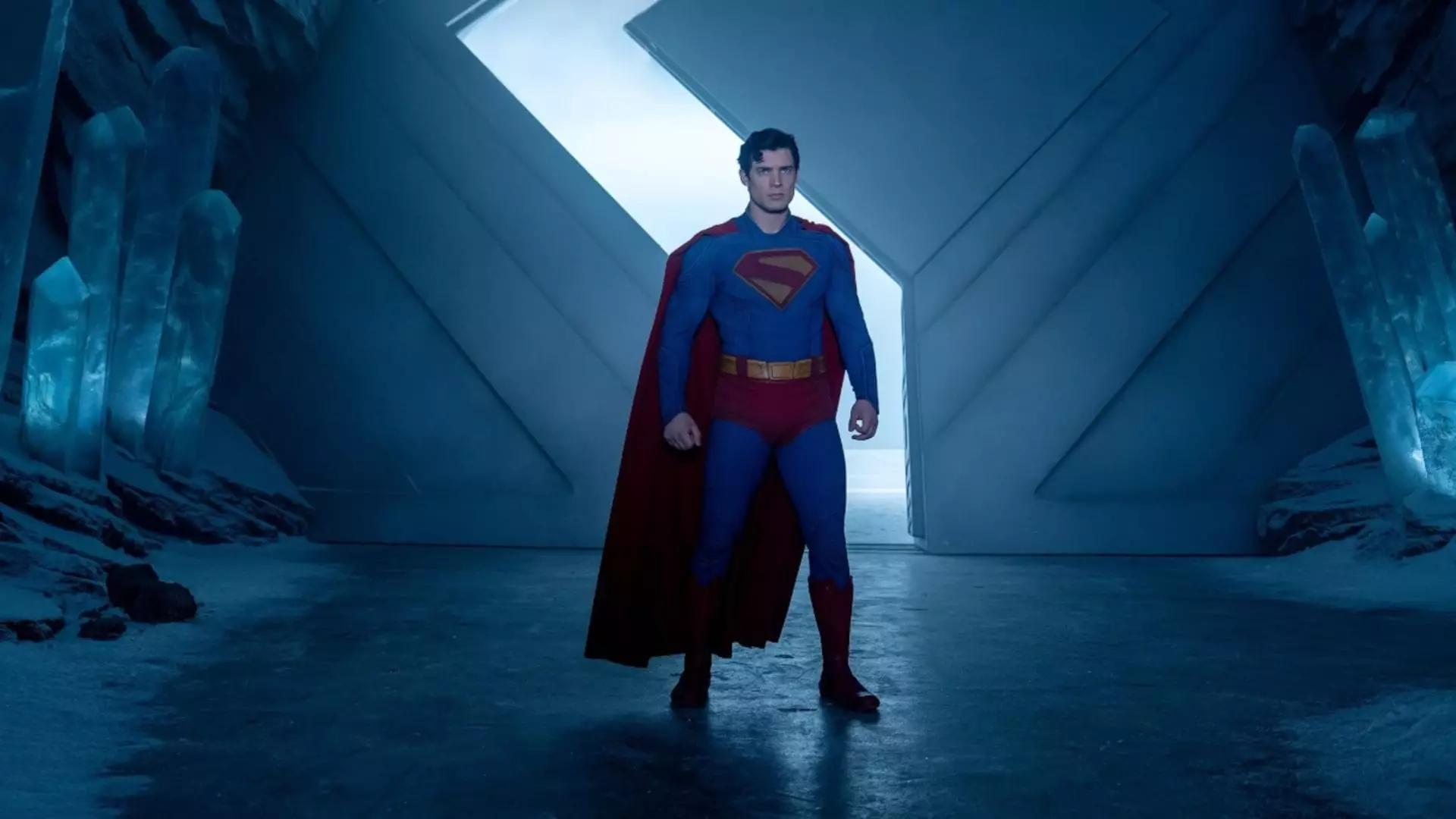The debut of Warner Bros.’ latest Superman installment signals not just a step forward but a calculated leap in the evolving landscape of superhero cinema. Garnering $22.5 million in preview showings, the film’s early performance surpasses previous Superman outings, setting a precedent and igniting debate about the true power of brand nostalgia versus innovative storytelling. While this is hailed as the third-best preview performance in DC history, it also raises a critical question: does initial box office enthusiasm translate into sustained success, or is it merely an ephemeral blip driven by expectations?
The striking figure of over $22 million illustrates a significant shift. It signifies a possible reawakening of the archetypal hero amidst a saturated genre, yet it also reflects the delicate balance Warner Bros. must maintain in delivering a story that resonates beyond the nostalgia of fans. The early numbers are promising, but they are also a rallying cry for cynics who remind us that previews often overhype what might ultimately be a fleeting triumph. This scenario underscores the inherent tension in superhero filmmaking: the allure of proven characters versus the imperative to innovate.
Assessing the Stakes: Can Expectations Be Managed?
Projected to gross between $130 million and $140 million over the opening weekend, Superman’s return to theaters appears optimistic yet cautiously pragmatic. For context, back in 2013, “Man of Steel” opened to a modest $9 million on previews and went on to reach $116 million in its debut weekend. The ambitions now reflect a perceived potential for cultural and commercial reach that surpasses previous standards—particularly if the film succeeds in leveraging high-quality visuals and family appeal.
Yet, this lofty prediction cannot ignore the broader context of superhero fatigue among audiences. DC’s recent history shows both exhilarating highs and disappointing lows, with films like “Justice League” and “Suicide Squad” oscillating in response to changing fandom expectations. For Gunn and Safran, the challenge is to consolidate brand loyalty while carving out a fresh narrative identity that appeals to new demographics. Their strategy of injecting more hope and thematic optimism contrasts sharply with darker, more nihilistic trends, positioning Superman as an emblem of idealism. Whether this approach will resonate remains a gamble, albeit one fueled by increasing confidence in Gunn’s creative vision.
The Broader Cultural & Industry Implications
A key point of analysis is the ripple effect this movie could have in defining the future of DC and, consequently, Warner Bros.’ cinematic dominance. The renewed focus on storytelling rooted in hope and heroism appears to be a strategic move aimed at regenerating the franchise’s waning influence. The success of this reboot hinges on discerning whether audiences are genuinely aligned with heartfelt, optimistic narratives or still seeking darker, more complex themes.
Furthermore, the film’s reception at premium screens and its potential to entice families could be instrumental in long-term box office stamina. If young viewers, brought into the fold through this film, become lifelong fans, Warner Bros. might have found a blueprint for sustainable growth in an era increasingly dominated by streaming over theatrical releases. Yet, this optimism must be tempered by the inherent risks of reboot fatigue and changing consumer habits that favor franchise fatigue and weariness with overexposure.
The strategic leadership of Gunn and Safran embodies a centrist approach—respecting the franchise’s legacy while attempting to innovate within a recognizable framework. Their past successes with Marvel’s Guardians of the Galaxy and their experience with darker DC projects suggest they are acutely aware of the tightrope they walk. Their 10-year plan hints at a future where innovation and respect for tradition coexist, but the true test lies in whether audiences will accept this balance.
Critical Reflection: Is the New Superman a Sign of Revival or an Illusion?
Ultimately, Superman’s cinematic return is as much a gamble on brand equity as it is on creative reinvention. The early box office numbers offer a promising outlook but should not lull stakeholders into comfort. The film’s reception may signal a shift in audience preferences, but it is also subject to the unpredictable winds of pop culture trends.
The central question remains: can Superman, a symbol of hope and virtue, become a vessel for Warner Bros. to steer its fractured DC universe into a more cohesive, successful future? The answer depends on whether the film can transcend expectations, deliver compelling storytelling, and forge a lasting connection with viewers. For now, the industry watches with bated breath—hopeful that Gunn and Safran’s bold vision will be the renaissance the franchise desperately needs or just another fleeting flash in the pan.

